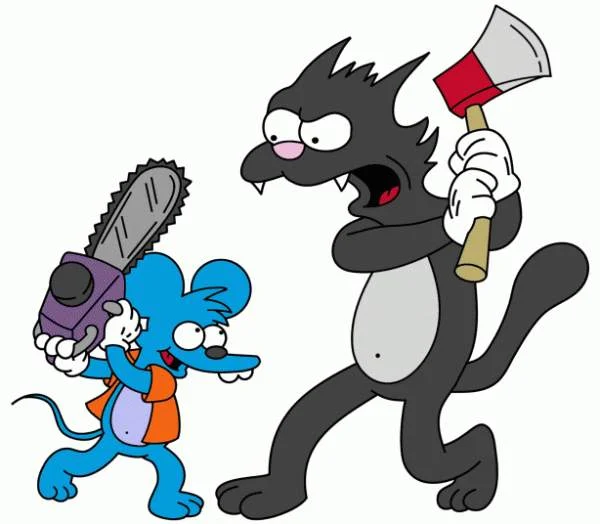There is has always been a concern about what will happen to children who are exposed to media violence.
Will they flip out and attack their peers? Will they become desensitized to violence in their real lives? Will they kill their parents because Spongebob told them to?
These concerns haven’t stopped companies from marketing violent media to children. An Indiana University study has determined that violence doesn’t add any enjoyment to the programs and characters that children like.
In a research study published in the journal Media Psychology, Andrew J. Weaver, an assistant professor of telecommunications in IU’s College of Arts and Sciences, and colleagues tested the conventional wisdom held up by media producers that children like to watch violent programming.
“Violence isn’t the attractive component in these cartoons, which producers seem to think it is. It’s more other things that are often associated with the violence. It’s possible to have those other components, such as action specifically, in non-violent ways,” Weaver said in an interview. “I think we should be concerned about violent content in cartoons in terms of the potential effect. This is one way that we can get around that from a producer’s point of view.

“You don’t have to cram violence into these cartoons to get kids to like them. They’ll like them without the violence, just as much if not more,” he said.
Cartoons that depict violence have been a constant in Saturday morning programming for decades and now kids have access to cable television channels that air nothing but children’s shows and cartoons. Classic cartoons like the “Looney Tunes” series have showcased hilarious slapstick violence. More recently, political correctness and the general wussification of our nation have led to overprotective parenting groups having a hissy fit over “Pokemon” and “Mighty Morphin Power Rangers”.
They don’t like the violence depicted in those shows, and they are fearful because those kinds of shows are popular with kids.
Several content analyses have found that as many as 70 percent of children’s television shows have violence in them. That means that a large amount of parents have another social problem to worry about.
“For many producers and media critics, the question is not if children love violence, but rather why children love violence,” Weaver and his co-authors wrote in the paper. “Our goal in this study was to examine children’s liking of violent content while independently manipulating the amount of action, which is often confounded with violence in the existing research.”
Co-authors include Jakob Jensen of Purdue University, Nicole Martins of IU, Ryan Hurley of North Carolina State University and Barbara Wilson of the University of Illinois.
The media researchers used a sample group of 128 school children, ranging in age from five to 11 and from kindergarten to the fourth grade. There was a nearly equal number of boys and girls.
Assistants presented each child one of four versions of a five-minute cartoon created for the study and then guided them through a survey. The cartoon was designed to look like familiar slapstick cartoons. Four different versions of the cartoon were screened. Six violent scenes were put in one version; they were carried out by both characters and in response to previous aggression. Nine action scenes were added to another version. Two other versions had lesser amounts of action or violence.
They found that violent content had an indirect negative effect on whether boys enjoyed a program, because of how they identified with the characters.
“That was a little surprising,” said Weaver, the father of two young sons. “There is a lot of talk about boys being more violent and more aggressive, for whatever reason, social or biological, and yet we found that they identified with the characters more when they were non-violent . . . They liked the characters more and they enjoyed the overall cartoon more.
“This is good news. If producers are willing to work on making cartoons that aren’t violent so much as action packed, they can still capture their target audience better . . . and without the harmful consequences.”
Oppositely, amongst girls violence did not decrease wishful identification of the characters. Weaver thinks that this may be because such slapstick cartoons are geared more toward boys than girls. Also, girls saw the characters as boys, despite the fact they were created without sexual attributes.
“They’re not going to identify with what they perceive to be male characters, whether they are violent or not,” he said. “They didn’t prefer the more violent programming. They were just using other cues besides the character’s violent or non-violent behavior to determine how much they enjoyed the show.”
Weaver wants to relate his research to characters in more female-oriented shows, like “The Powerpuff Girls.” He also ascertains that violence is seen by producers as a simple way to present action and conflict in a story.
“Alternatives could be things related to speed — characters going fast, moving quickly. It was one way that we manipulated action in this study,” he said. “If you can increase action without increasing violence, which clearly is possible as we did it in this study, then you can increase the enjoyment without potential harmful effects that violence can bring.”
The cartoon the researchers used, “Picture Perfect Thief,” introduced a villain called Eggle, who tried to steal a painting created by a hero named Orangehead. Eggle eventually fails and the hero’s painting gets first place in an art show. It was created by using Macromedia Flash. You can watch the weirdness on YouTube.
So supposedly kids don’t enjoy violence in their programming, which means some would think that there is no reason to put violence in kid’s shows. Does that mean kids should only watch happy friendly shows where there is no conflict and only happy rainbow kisses? Most kids would rather sleep in.






